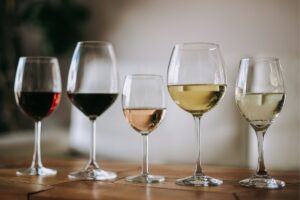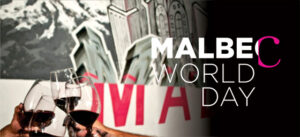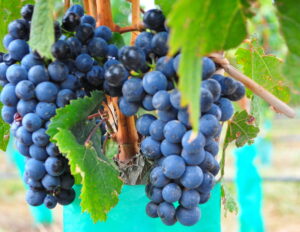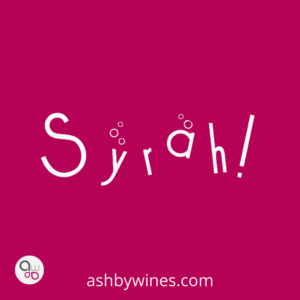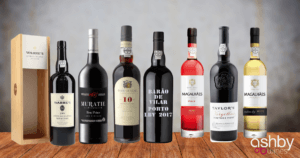When you find the wine you love it’s amazing, but it does take a lot of trial-and-error to get there. Not that this is always a bad thing, but it does mean a lot of tasting. And with the growing industry of online wine tasting and wine tasting tours, the horizon is ever expanding in the search.
So how do you begin your journey to find your perfect wine …
Limbering up… what do you need?
Grab yourself a bottle of wine and a wine glass. Now believe it or not, there is an international standard for tasting wine glasses. They should have a rounded bowl and be tapered on the sides to keep from spilling while you are swilling. If you don’t have one of these at hand, a wine glass will be fine, just don’t swill too vigorously.
Find yourself a nice quiet spot, to really focus on the wine, and pack some snacks to keep you sustained. Breadsticks, bread rolls, nuts, cheese or dried fruit work well.
The wine should be prepared too – red wine should be brought to room temperature, while white wine should be chilled.
The four S’s of wine tasting:
See
Pour around 60ml (half a normal small glass of wine) into your glass. Have a good look at the colour, viscosity (consistency), how cloudy (opaque) or clear it is. This is determining the wine’s ‘structure’. Depending on the grape, age, and the process used in making the wine, each wine will have its own unique characteristics in its structure.
Now give it a good swirl, yes this does make a difference. While it can make you look competent (as long as you don’t spill), it also allows all those lovely wine smells to be released allowing you to smell the aroma, also called the bouquet or nose … on to step 2!
Smell
Give your wine a good sniff, make sure you can feel it at the back of your throat. Or more scientifically, use your olfactory sense to smell the wine. This will help you work out the wine’s composition. This takes a while to get used to, initially one wine may smell very much like another, so if you need to, use the bottle label as your crib sheet to get you going.
There are all kinds of different scents that make up a wine. To begin you can look at the different scent grouping that may help you identify them. Does it smell:
Fruity – what kind of fruit? Citrus, berries, tropical.
For white wines – does it smell cheesy, nutty, or like stale beer. This is linked to what type of yeast-derivative is used in the fermentation process.
Can you taste oak/cedar, nuts, spices, vanilla or even old tobacco?
This will require some practice so keep working on it.
Sip
Take a small sip (resist the urge to neck it at this point). This will tell you more about the structure of the wine, whether it is sweet, sour, bitter, or smooth. Your tongue gets to work as you get those amazing taste at the back of the throat (retro-nasal). Actually your tongue can only taste sweet and sour, bitter and salty. Wines will very rarely be salty.
What else can your tongue tell you – its texture (viscosity). The higher the alcohol content the stronger the texture (thickness).
You will also be able to pick up those tannins. This is what gives your tongue that dry feeling. Tannin comes from the skins of the grapes and from oak ageing. It is mainly found in red wines.
Sit back and enjoy
The flavour of the wine may linger or disappear quite quickly, this will depend on the type of wine. A good sign of quality is balance. A wine is balanced when all of the wine’s components (sweetness, acidity, and tannins) blend together. A wine is mature when it has achieved optimal balance.
Now to sum up and commit the wine to memory for future drinking – did you like it or not. How did you find it, perhaps too fruity, is it too alcoholic or very dry? If you want to keep your notes for future reference you can always use an app, such as Plonk – where you can take pictures of your wine occasions and record information on your favourite wines – a bit like creating a pictorial reminder of your best bottles.
Keep practicing, as you build these initial skills in getting to know your grapes you will soon be able to move onto being able to pin a wine down to its region …. more on that to come…
From the team at Ashby Wines 😊



